Discover Which Shrubs Bloom the Longest: Top Varieties for Vibrant Gardens
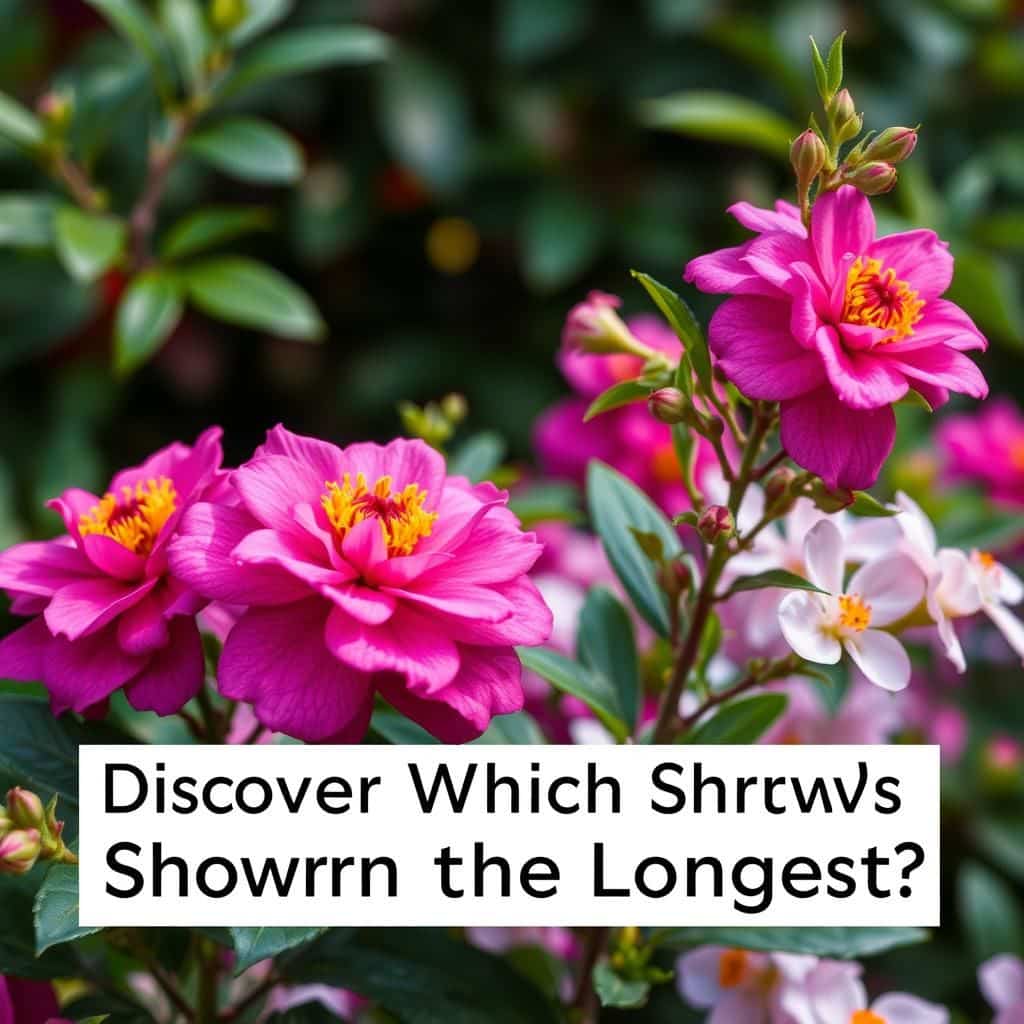
In the pursuit of a vibrant garden, selecting the right shrubs can make all the difference. While many plants offer brief bursts of color, some varieties stand out for their remarkable ability to bloom for extended periods. This article delves into the world of long-blooming shrubs, highlighting top selections that not only add visual appeal but also bring life to your outdoor spaces throughout the seasons. From hardy favorites to unique finds, discover the shrubs that will keep your garden alive with color for the longest time, ensuring that every corner is a celebration of nature’s beauty.
Which Shrubs Bloom the Longest?
Many gardeners seek to create a vibrant landscape that provides color throughout the growing season, making the choice of shrubs that bloom for extended periods crucial. Some of the best options include the Potentilla, which showcases bright yellow flowers from late spring to early fall, and the Rose of Sharon (Hibiscus syriacus), known for its long-lasting blooms from mid-summer to fall. Additionally, the Butterfly Bush (Buddleja davidii) produces fragrant flowers that can attract pollinators and bloom from summer through to the first frost. Other noteworthy mentions are the Knock Out Rose, which offers repeat flowering throughout the season, and Abelia, a lower-maintenance shrub that blooms from summer to autumn, providing extended joy with its delicate blossoms.
Potentilla
The Potentilla shrub is prized for its long blooming period, offering an abundance of yellow, orange, or pink flowers from late spring until the first frost. This versatile shrub thrives in various conditions and is known for its hardiness, making it a favorite among gardeners. Potentilla can tolerate poor soil and drought, allowing it to flourish in diverse landscapes while providing continuous color.
Rose of Sharon
The Rose of Sharon (Hibiscus syriacus) produces stunning flowers in various colors, including purple, white, and blue, starting in mid-summer and continuing until the fall. This shrub is particularly valued for its tolerance of heat and drought, making it suitable for warmer climates. Its eye-catching blooms attract pollinators like butterflies and hummingbirds, enhancing the overall garden experience.
Butterfly Bush
The Butterfly Bush (Buddleja davidii) excels in attracting butterflies and other beneficial insects due to its fragrant, tubular flowers that bloom from summer through late fall. Its spikes of purple, pink, or white flowers provide ongoing visual interest, and when deadheaded, this shrub can produce even more blooms. It thrives in sunny locations and well-draining soil, making it an essential addition to wildlife gardens.
Knock Out Rose
The Knock Out Rose is renowned for its ability to produce stunning blooms continuously, unlike traditional roses that may only bloom once a season. With vibrant red, pink, or yellow flowers, this shrub can bloom from early spring until the first frost when appropriately cared for. Its disease resistance and low maintenance requirements make it an ideal choice for both novice and experienced gardeners looking for a reliable long-blooming shrub.
Abelia
Abelia is a charming shrub with delicate flowers that begin blooming in summer and continue through to autumn, providing a prolonged color display. Its small, tubular flowers attract a variety of pollinators and are often white, pink, or lavender, complemented by glossy green leaves. Abelia is valued for being low-maintenance and for its ability to thrive in varying soil types, making it an excellent addition to any garden.
| Shrub Name | Bloom Duration | Flower Colors | Pollinator Friendly |
|---|---|---|---|
| Potentilla | Late Spring - Fall | Yellow, Orange, Pink | Yes |
| Rose of Sharon | Mid-Summer - Fall | Purple, White, Blue | Yes |
| Butterfly Bush | Summer - Fall | Purple, Pink, White | Yes |
| Knock Out Rose | Spring - Frost | Red, Pink, Yellow | Yes |
| Abelia | Summer - Autumn | White, Pink, Lavender | Yes |
What is the longest lasting flowering shrub?

The longest lasting flowering shrub is generally considered to be the Rhododendron, particularly certain species and hybrids that can bloom for extended periods. These shrubs are known for their extensive floral displays and can thrive in a variety of conditions. Some varieties can produce flowers for up to several months during the growing season, depending on climate and care.
Characteristics of Rhododendrons
Rhododendrons are known for their large, vibrant blooms that can come in various colors including pink, purple, white, and red. Here are some key characteristics:
- Diversity: There are over 1,000 species of Rhododendrons, offering a wide variety of options.
- Leaf Structure: They have leathery leaves which provide a substantial amount of foliage even when not in bloom.
- Size: Rhododendrons can vary greatly in size, from compact shrubs to large trees.
Ideal Growing Conditions
To ensure maximal blooming periods, Rhododendrons prefer specific growing conditions. Here are the best practices for cultivation:
- Soil: Acidic and well-drained soil is crucial for their growth.
- Light: Dappled sunlight or partial shade is preferred to avoid scorching.
- Watering: Consistent moisture, especially during the growing season, helps prolong blooming.
Maintenance Tips
Proper maintenance is essential for extending the life cycle of blooms in Rhododendrons. Consider the following:
- Pruning: Regularly remove wilted flowers and dead branches to encourage new growth.
- Fertilizing: Use a fertilizer designed for acid-loving plants to promote healthy blooms.
- Pest Control: Keep an eye out for pests such as aphids and mites that can affect flowering.
Popular Varieties
Many varieties of Rhododendrons are known for their prolonged flowering ability. Some noteworthy types include:
- Rhododendron 'Nova Zembla': Recognized for its bright red blooms and robust nature.
- Rhododendron 'Catawbiense': Features large purple flowers and is one of the hardiest varieties.
- Rhododendron 'Roseum Elegans': Known for its pink flowers and strong scent, making it a garden favorite.
Environmental Impact
Rhododendrons also play a vital role in their ecosystems:
See also: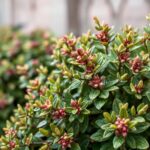
- Biodiversity Support: They provide habitat and food for various pollinators such as bees and butterflies.
- Soil Stability: Their root systems help prevent soil erosion in hilly or unstable areas.
- Aesthetic Value: Widely appreciated in landscaping for their beautiful blooms and evergreen foliage.
Which bushes bloom all summer?
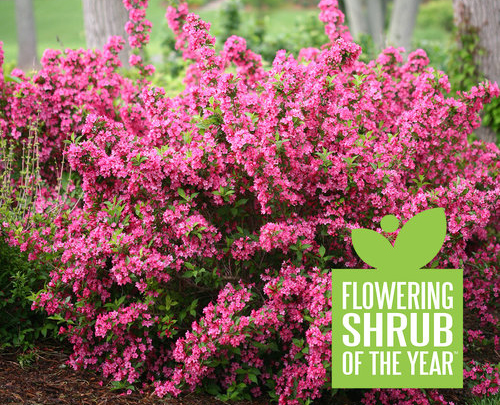
Certainly! Here is a detailed response regarding bushes that bloom all summer, along with related subtopics.
Which Bushes Bloom All Summer?
Several bushy plants are known for their ability to bloom throughout the summer months, providing continuous color and beauty to gardens. These bushes are typically hardy and suitable for various climates, making them popular choices for gardeners looking to enhance their landscapes with vibrant foliage and flowers. Here are some highly regarded bushes that bloom all summer:
1. Butterfly Bush (Buddleja davidii): Renowned for attracting butterflies, this bush produces long spikes of colorful flowers in various shades, including purple, blue, and white.
2. Summer Lilac (Buddleja): Similar to the butterfly bush, the summer lilac is known for its fragrant blooms that last from early summer to fall.
3. Crape Myrtle (Lagerstroemia): This bush offers clusters of vibrant flowers in pink, red, white, and purple during the summer, along with attractive bark and fall foliage.
4. Knock Out Rose (Rosa ‘Radrazz’): Recognized for its hardiness, the Knock Out Rose produces continuous blooms from spring until frost, with low maintenance requirements.
5. Rose of Sharon (Hibiscus syriacus): This bush showcases large, beautiful flowers during the summer and is available in a range of colors.
The Importance of Choosing the Right Location
Choosing the right location for your summer-blooming bushes is crucial for their growth and blooming potential. The right spot will ensure they receive adequate sun and moisture, preventing stress.
- Sunlight: Most blooming bushes require full sun (at least 6-8 hours of sunlight daily) to thrive.
- Soil Quality: Well-drained soil rich in organic matter promotes healthy root systems.
- Spacing: Allow adequate space between bushes to prevent overcrowding and ensure good air circulation.
Watering and Maintenance Tips
Proper watering and maintenance are essential for summer-blooming bushes to flourish and produce abundant flowers. Implementing a systematic care routine will help maintain their health and beauty.
- Regular Watering: Water deeply and consistently, especially during hot periods when plants may become stressed.
- Mulching: Apply a layer of mulch to retain moisture, regulate soil temperature, and suppress weeds.
- Pruning: Ensure to prune at the right time to encourage new growth and more vibrant blooms.
Companion Plants for Summer-Blooming Bushes
Incorporating companion plants allows for a more dynamic garden landscape, complementing the blooming bushes and enhancing visual appeal.
- Lavender: Its aromatic properties pair well with flowering bushes and attract pollinators.
- Catmint: This perennial's blue flowers contrast beautifully with many summer bloomers.
- Salvia: Known for its tall spikes and various colors, it provides interest alongside bushy blooms.
Common Pests and Diseases
Be aware of potential pests and diseases that can affect summer-blooming bushes, as timely action can prevent damage and loss of blooms.
- Aphids: These small insects suck sap from the plants, causing stunted growth and wilting leaves.
- Mildew: A fungal disease that may occur in humid conditions, affecting leaf health and overall appearance.
- Spider Mites: Tiny pests that can cause significant damage; they thrive in hot dry conditions and create webbing.
Seasonal Considerations for Blooming
Understanding the seasonal patterns of blooming can help gardeners make the most of their summer-blooming bushes.
- Timing of Blooms: Each bush may have a specific time frame in which it blooms and may require different care during that period.
- Fertilization Schedule: Regular feeding during the growing season can lead to prolonged blooming periods.
- Fall Preparation: Prepare your bushes for winter by assessing their overall health and performing any necessary end-of-season maintenance.
What plants stay in bloom the longest?
:strip_icc()/may-night-salvia-6PYx1fv7qNFBkajzAYzBzY-69cba449f4344b8b83f56f7912af0355.jpg)
When considering plants that provide prolonged blooms, several annuals, perennials, and flowering shrubs stand out for their extended flowering periods. These plants not only add vibrant colors to gardens but also attract pollinators, making them ideal choices for landscapers and avid gardeners alike. Here are some noteworthy plants known for their longevity in bloom.
Annuals with Long Blooming Seasons
Annual plants typically complete their life cycle in one growing season, but some varieties can bloom from spring until the first frost.
- Petunias - Known for their vibrant and diverse colors, petunias can bloom continuously from spring to fall, requiring deadheading to encourage more flowers.
- Geraniums - These hardy annuals can produce blooms almost all summer with minimal care, especially in well-drained soil and sunny locations.
- Calibrachoa - Also known as million bells, these small, petunia-like flowers provide a cascade of blooms throughout the summer months, often thriving in containers.
Perennials that Bloom for Extended Periods
Certain perennial plants are champions of long-lasting blooms and can thrive for many years in the garden.
See also: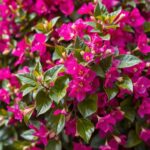
- Daylilies - With varieties that can bloom for several weeks, daylilies produce numerous flowers on sturdy stems, making them resilient and colorful additions to any garden.
- Coreopsis - This cheerful flower can bloom profusely throughout the summer into early fall, appealing to bees and butterflies alike.
- Salvia - Known for its striking blue and purple flowers, salvia can bloom for several months, especially when regularly deadheaded.
Flowering Shrubs with Long Blooming Periods
Some flowering shrubs can provide an abundance of blooms for an extended season, making them excellent focal points in the yard.
- Hydrangeas - Many varieties of hydrangeas bloom from late spring to fall, with their large, showy flower clusters providing enduring visual appeal.
- Butterfly Bush (Buddleia) - This shrub not only offers long-lasting blooms from summer to fall but also attracts various pollinators, enhancing biodiversity in gardens.
- Roses - Many modern varieties of roses can bloom continuously with appropriate care, including pruning and fertilizing, providing joy throughout the growing season.
Seasonal Considerations for Blooms
The timing of a plant's blooming season can significantly affect its overall performance in the garden.
- Spring Bloomers - Plants like tulips and daffodils bloom in early spring, setting the stage for other annuals and perennials that take over as summer approaches.
- Summer Bloomers - Varieties such as zinnias and echinacea are ideal for providing color when other spring flowers fade.
- Fall Bloomers - Some perennials, such as asters and sedums, bloom when most gardens begin to wane, adding late-season vibrancy.
Maintenance Tips for Prolonged Blooming
To ensure plants stay in bloom for as long as possible, certain maintenance practices are essential.
- Deadheading - Regularly removing spent flowers encourages many plants to produce new buds, extending the blooming period.
- Proper Watering - Consistent and adequate moisture is crucial, particularly in hot summer months, to promote healthy blooms.
- Fertilization - Applying balanced fertilizers can boost blooming potential, especially for heavy bloomers that require additional nutrients during their peak season.
What is the longest blooming plant?

The longest blooming plant is typically considered to be the ever-blooming rose or some varieties of the geranium. These plants have been bred to produce flowers continuously through the growing season, providing color and beauty for an extended period. However, when considering the longest individual flowering duration, the Hibiscus rosa-sinensis, or Chinese hibiscus, is often noted for its blooms that can last up to 24 hours but under optimal conditions, it can produce flowers nearly every day.
The Ever-Blooming Rose
The ever-blooming rose is known for its remarkable ability to produce flowers throughout the entire growing season. Unlike traditional rose varieties that may only bloom once a year, ever-blooming roses can continuously produce blooms if cared for adequately. This characteristic has made them a favorite among gardeners looking to maintain a vibrant garden.
- Continuous blooming from spring until the first frost.
- Requires regular deadheading for optimal performance.
- Available in a wide range of colors and fragrances.
Geranium Variants
Certain variants of geraniums also enjoy an extended blooming period. Known for their resilience and adaptability, they bring color to gardens and landscapes continually throughout the summer. These perennial plants can be quite rewarding for those seeking long-lasting flowers.
- Strong and hardy, thriving in various conditions.
- Regular watering can enhance blooming durations.
- Available in numerous colors, from vibrant reds to soft pastels.
The Chinese Hibiscus
The Hibiscus rosa-sinensis is famous for its large, colorful blossoms that can sometimes last up to 24 hours. While individual flowers have a short lifespan, the plant can produce blooms daily in ideal conditions, making it a prominent feature in tropical gardens.
- Blooms can be large and striking, attracting pollinators.
- Needs full sun and well-drained soil for optimal growth.
- Regular fertilization encourages more flower production.
Care Tips for Long-Blooming Plants
Caring for long-blooming plants requires specific practices to ensure they reach their full potential. Understanding their individual needs helps maintain healthy and vibrant blooms throughout the growing season. This support is crucial for maintaining your plant's flowering capacity.
- Regular pruning encourages new growth and flowering.
- Consistent watering complements fertilization efforts.
- Providing adequate sunlight is essential for bloom production.
Choosing the Right Environment
Selecting the appropriate environment is vital for the success of long-blooming plants. Factors such as climate, soil type, and exposure to sunlight can significantly affect their growth and blooming patterns. Therefore, researching the ideal conditions can lead to a flourishing garden filled with color.
- Assess local climate conditions before planting.
- Choose soil that retains moisture without becoming waterlogged.
- Position plants to receive adequate sunlight based on their specific needs.
Questions from Our Readers
Which shrubs bloom the longest?
The shrubs that tend to bloom the longest include varieties such as rose of Sharon, long-blooming hydrangeas, and repeat-flowering roses. These plants are known for their ability to produce flowers over an extended period, often throughout the summer and into the fall.
How can I extend the blooming period of my shrubs?
To extend the blooming period of your shrubs, it's important to provide the right care. This includes proper watering, regular __pruning__, and using fertilizers specific to the plant's needs, which can help promote longer-lasting blooms.
Are there any specific care tips for long-blooming shrubs?
Yes, specific care tips for long-blooming shrubs involve ensuring they receive adequate sunlight, proper soil drainage, and regular deadheading to encourage new blooms. Additionally, monitoring for pests and diseases is crucial to maintain their health and flowering.
Can climate affect the blooming duration of shrubs?
Absolutely, climate can significantly affect the blooming duration of shrubs. In regions with mild winters and warm summers, shrubs may bloom longer compared to those in harsher climates, where conditions can stunt or shorten blooming periods.
See also: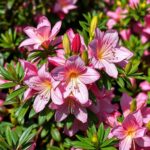

If you want to read more articles like Discover Which Shrubs Bloom the Longest: Top Varieties for Vibrant Gardens, we recommend you check out our Shrubs category.
Leave a Reply
Related Articles